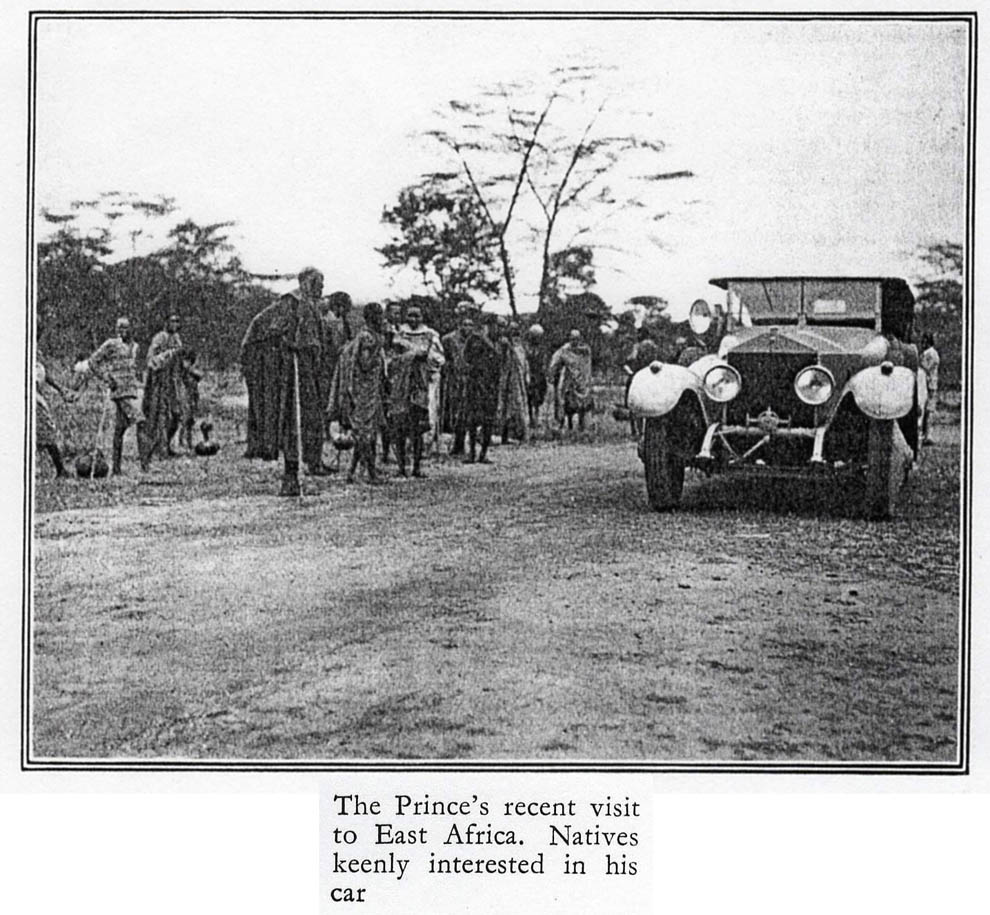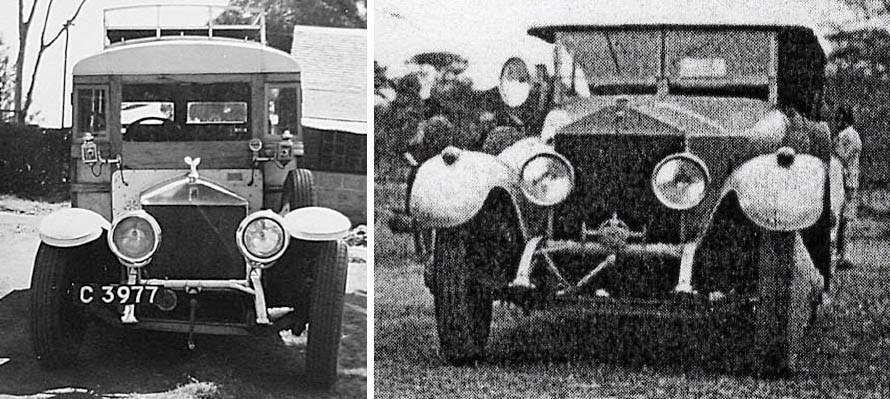Safari Wagon For The Prince of Wales?
In August 2012, Wayne M. Kennerley, a U.K. researcher interested in the history of classic cars in Africa, sent me an email with an image which casts severe doubt on a surmise which has existed ever since these web pages were first published in 2002, namely:
| ... it is thought that 'The Bus' was decommissioned sometime around 1927 and a new 'shooting brake' body built in place of the earlier armament and shipped to Kenya for use by the then Prince of Wales, later King Edward VIII, during his extensive safari in Kenya |
 | |
|
Wayne wrote:
"Regarding the the 'Prince of Wales Safari' story, I have found no evidence for this car having been used on the Prince's safari. Photos of the safari show a more modern Silver Ghost, which is believed to be the 1920 Silver Ghost later owned by Jack Ruben in Nairobi. The attached photo shows the P.O.W.'s safari car "So this would appear to throw the previous surmise (which seemed very credible - given the "shooting brake" body) into a cocked hat.
Taking a look at the two pictures side-by-side:

|
Given that the image on the right is definitively known to be the vehicle used by the P.O.W. on his safari, further doubt is added to the provenance of the Pembroke House Rolls on the left. Leaving aside the obvious body differences to the rear of the firewall and the fact that we know one vehicle to be a 1920 model, the other a 1914 model, we can see by the front mudguards that we are dealing with two different vehicles.
The very front of the mudguards on the P.H. Rolls only dip down relatively slightly from the horizontal apex, compared to those on the P.O.W. Rolls where they would appear to "swoop" further down. Furthermore, there appear to be "running lights" mounted on top of the mudguards of the P.O.W. Rolls, whereas the P.H. Rolls has more old-fashioned "carriage lamps" mounted just in front of the windscreen.
Other apparent differences are insignificant:
- the crank handle on the P.O.W. Rolls happens to be held to one side by a leather strap in this picture - to keep it clear of road obstructions as was common practice at that time,
- there appears to be a "badge bar" on which is mounted a Royal Crown insignia indicating that this vehicle was conveying Royalty.
- from what we can see of the front wheel of the P.O.W. Rolls, it appears be in the form of a conical disk - which came some years after the wooden-spoked wheels of the 1914 model. (The P.H. Rolls we know was fitted during its Pembroke House era with what appear to be American truck wheels from a much later era.)
So one aspect of the P.H. Rolls' history which was never actualy proven, but seemed to be a fairly sure thing, has now been pretty definitively disproved. Now we know even less than we thought we knew about this vehicle between 1920 (when the second owner was noted in factory records as Mrs Harry Lomax - daughter of the original owner - of Westwood, Park Road, Hale) and the time it was registered in Kenya around 1930.
To return to the original page, click here
Jitze Couperus
jitze.couperus@gmail.com